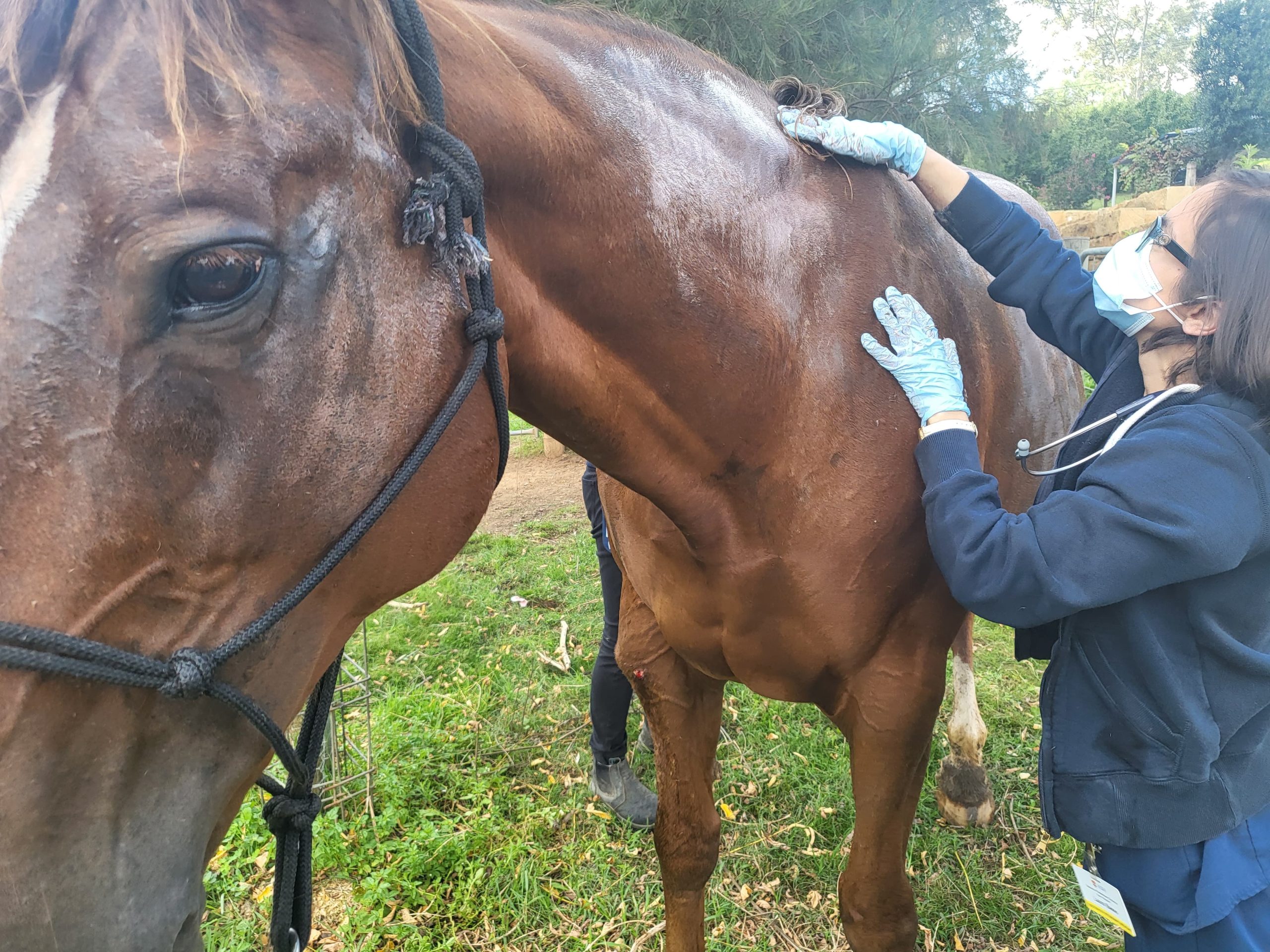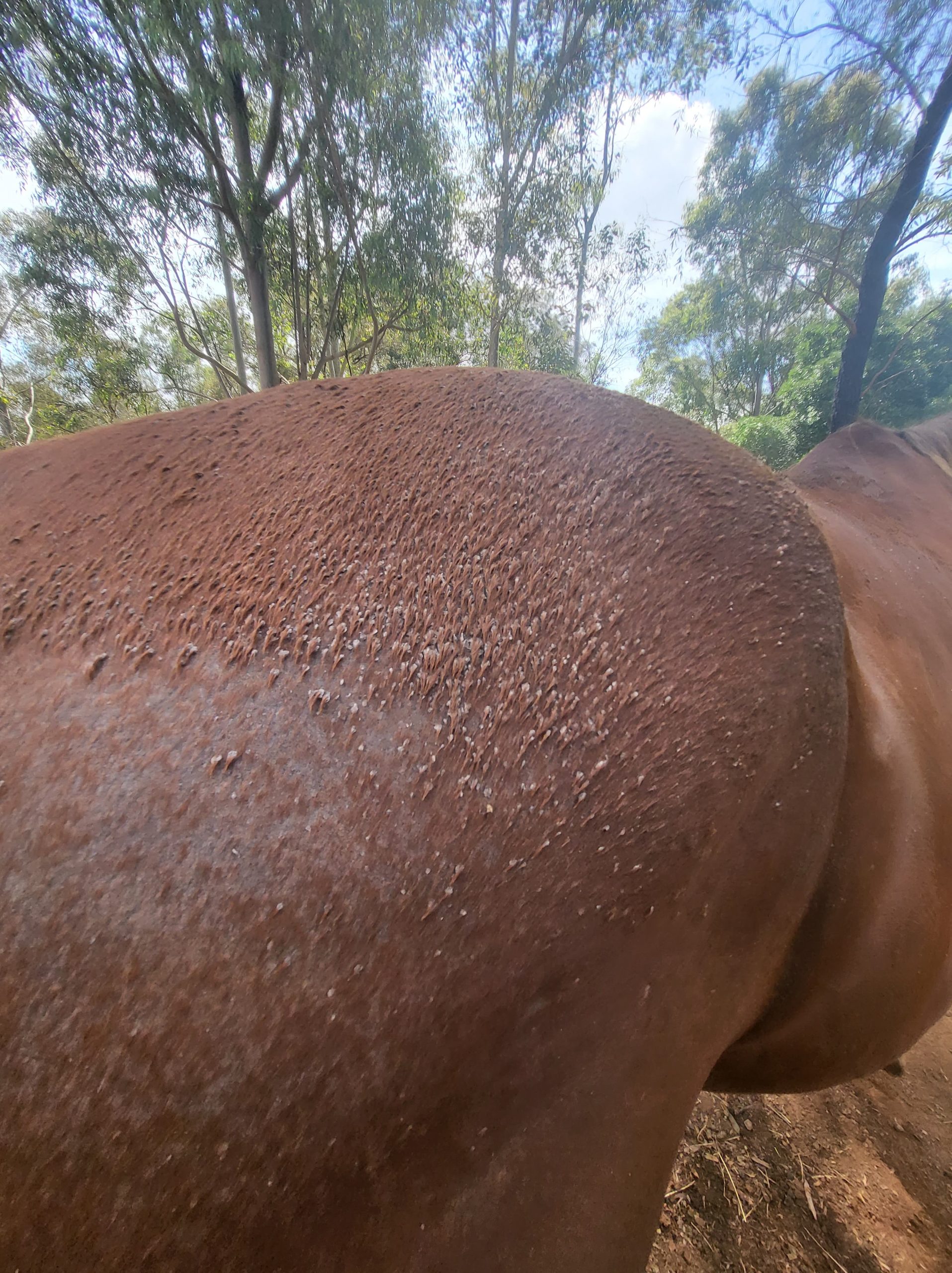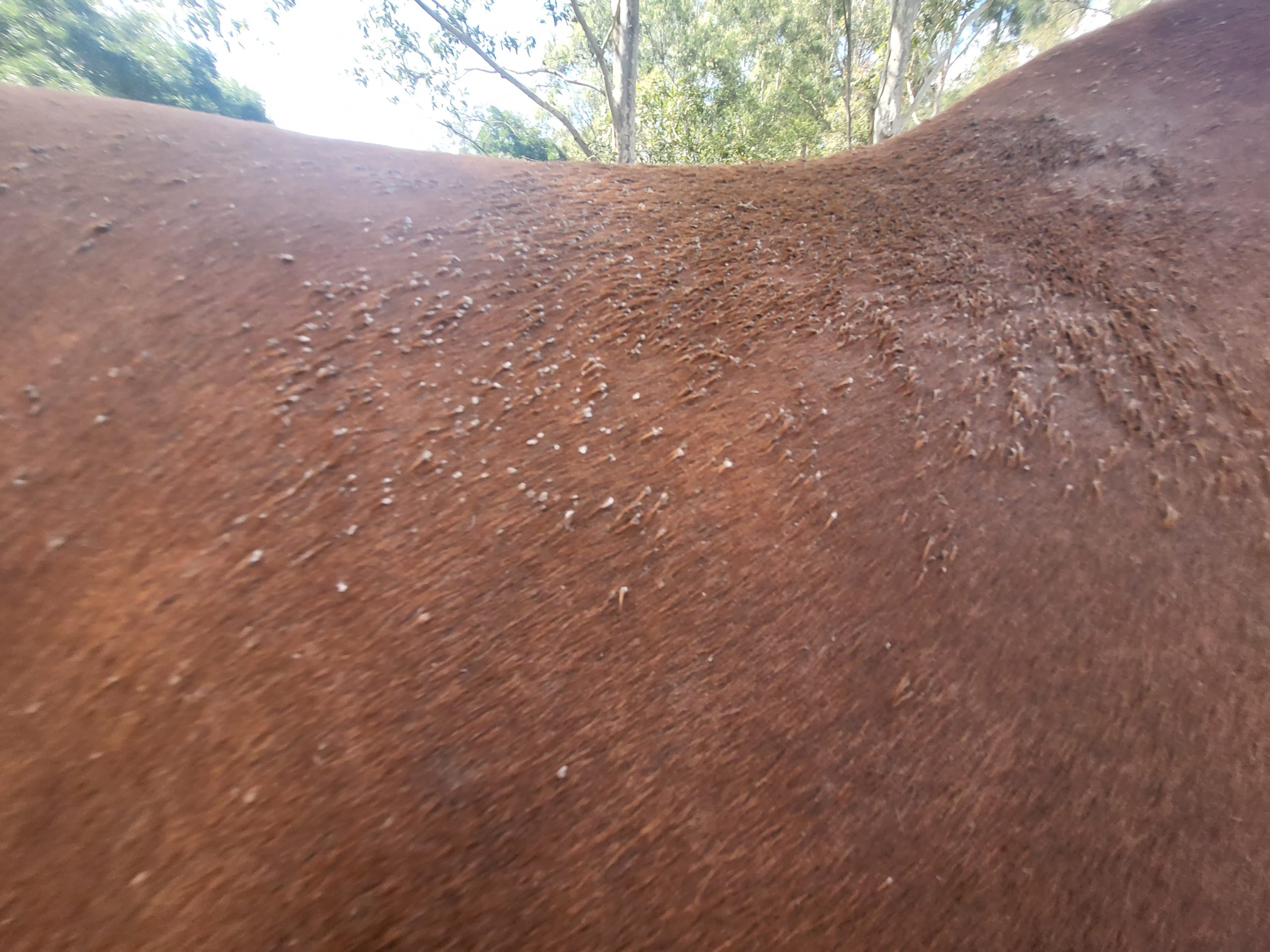Rain scald in horses
March 22, 2022
Equine veterinary hospital Comments Off on Standing tieback surgery for ‘roarers’
22
15
18
Along with the abundance of rain and humidity this season, it’s not surprising we are also seeing an increase in the number of horses affected by rain scald. Bacteria called Dermatophilus cause rain scald, and are also involved in lots of cases of greasy heel. The bacteria live on the skin and in the soil but need moisture to really thrive. If the skin remains wet for a prolonged period, the ‘barrier’ weakens and the bacteria can get into deeper layers. Insect bites or other damage to the skin will also allow better access for the bacteria to penetrate. It seems some horses are more prone to the problem than others and will develop the condition every year, whilst others in the same environment might be absolutely fine.
The classical signs of rain scald on your horse is a crusty, scabby or scurfy skin problem that affects any ‘wet’ skin – it can be over the face, withers and rump or the lower legs, depending on what rugs have been worn and the type of pasture or ground surface. Often you can pull off little tufts of hair and there is a moist spot at the point where the tuft came off the skin.
What can you do if you have a horse with this problem?
– Keep the horse dry (easier said than done after 16 days of rain!). Be careful with rugs because they sometimes trap moisture and sweat in warm weather and might actually worsen the problem.
– Gentle grooming to remove the crusts (avoid excessive scrubbing because this further damages the skin). Don’t share grooming equipment and collect the crusts to throw in the bin – because the bacteria are contagious and can survive a long time in the soil. Other horses and even people can be infected.
– Medicated shampoo like Pyohex ® (Dermcare) or Mediderm ® (Blackmores) used once to twice a week, allow a 10 minute soak before rinsing thoroughly
– Antiseptic sprays can be helpful
– Prevent insect bites and other ‘trauma’ to the skin
– Sometimes a course of antibiotics is needed – speak to your vet you are unable to get the condition under control.






0 Comments